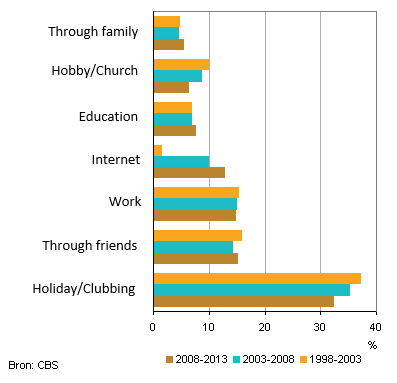No ratings yet. The article by (Malone, Laubacher, & Dellarocas, 2010) discusses how companies can achieve collective intelligence through the use of building blocks by using four main questions, what is being done, who is doing it, why are they doing it and how is it being done. The answer to one of the key questions is called a gene. This article focuses on the 16 principle genes and the factors involved in selecting them. This article enables companies to get answers for these questions, which can help systematically design their collective intelligence system. A weak point is that companies could have a problem identifying useful genes that are suitable for the situation.
The article by (Pisano & Verganti, 2008) discusses the four ways to collaborate namely; elite circle (closed and hierarchical network), innovation mall (open and hierarchical network), innovation community (open and flat network) and consortium (closed and flat network). This article develops a framework, outlining the advantages, challenges and enablers of the different collaborations, which can be useful for companies to make better decisions. On the negative side, this article does not take into consideration the difference in opinion/working styles of individuals within a group. It also fails to mention limitations related to openness, such as reluctance in sharing unknown information to the person, hoarding etc.
The third article by (Borison and Hamm, 2010), proposes judgment driven techniques based on assessing individual experts opinions (probability encoding), combination of such individual opinions (expert aggregation) and by placing bets on a specific outcome of interest (prediction markets). This article emphasizes on each process and outlines the problems, which decision makers could use to improve their assessment of judgmental uncertainty in decision-making. However, the techniques seem complex for a small size company to incorporate and the problem of undesirability, uncertainty and inaccuracy persists, which can lead to distorting market probabilities.
Additional articles include further research on how these crowdsourcing techniques could help accelerate new product development/innovation and the nascent market for labor crowdsourcing. An article by (Aitamurto, Leiponen, & Tee, 2011) claims that combination of user innovation and crowdsourcing is done by directly engaging individuals in the innovation process to gain fresh, fast and creative ideas, accelerating new product development. Since these inputs are from the end-users, there will be higher market acceptance and lower risk of failure. Starbucks crowdsourcing platform, MyStarbucksIdea is a great example of this.
Labor crowdsourcing platforms, such as Amazon Mechanical Turk and Crowdflower, pay intelligent workers to perform simple macro tasks such as image recognition, sentiment analysis etc. These platforms have created a shift from full time employment to part-time employment (Shaughnessy, 2012).
Mini-case study on crowdsourcing and new product develop include P&G’s Connect + Develop program which lists the problems P&G is trying to solve as well as an open submission where innovators can suggest original ideas for review. P&G also partnered with InnoCentive by rewarding innovative ideas with prizes. This helped P&G introduce more than 100 new lines across various markets, resulting in 60% increase in productivity (Confino, 2012). The strength of this case is definitely P&G’s external collaboration with partners through which the company was able to achieve successful crowdsourcing. The efficient use of the innovative ideas and solutions has also contributed to its success.

Second case study is on Threadless, an online community, which consists of more than 500,000 members, who actively participate in creating and selecting t-shirt designs. The company produces and ships over 1.5 million t-shirts per year, which accounts for an excess of $23 million in revenue (Lakhani & Kanji, 2008). Crowdsourcing has been a success for Threadless mainly due to the relationship established with the community members who feel a sense of ownership towards the company due to their contributions, which is the case in many crowdsourcing projects.

Sources:
Aitamurto, T., Leiponen, A., & Tee, R. (2011). The Promise of Idea Crowdsourcing – Benefits, Contexts,Limitations. Nokia Ideasproject White Paper .
Borison, A., & Hamm, G. (2010). Prediction markets: A new tool for strategic decision making. California Management Review , 52 (4), 125-141.
Confino, J. (2012, September 26). Procter & Gamble CEO on solving the world’s sustainability challenges. Retrieved from TheGuardian.com: http://www.theguardian.com/sustainable-business/procter-gamble-ceo-solving-worlds-sustainability-challenges
Lakhani, R. K., & Kanji, Z. (2008, June 30). Threadless: The Business of Community.
Malone, T., Laubacher, R., & Dellarocas, C. (2010). The collective intelligence genome. MIT Sloan Management Review , 51 (3), 21-31.
Pisano, G., & Verganti, R. (2008). Which kind of collaboration is right for you? Harvard Business Review , 86 (12), 78-86.
Shaughnessy, H. (2012, March 10). Work Without Jobs: A Trend For The Educated Elite. Retrieved from Forbes.com: http://www.forbes.com/sites/haydnshaughnessy/2012/03/10/a-little-more-on-work-without-jobs-for-the-educated-elite/
 (click on the picture to to read it)
(click on the picture to to read it)











